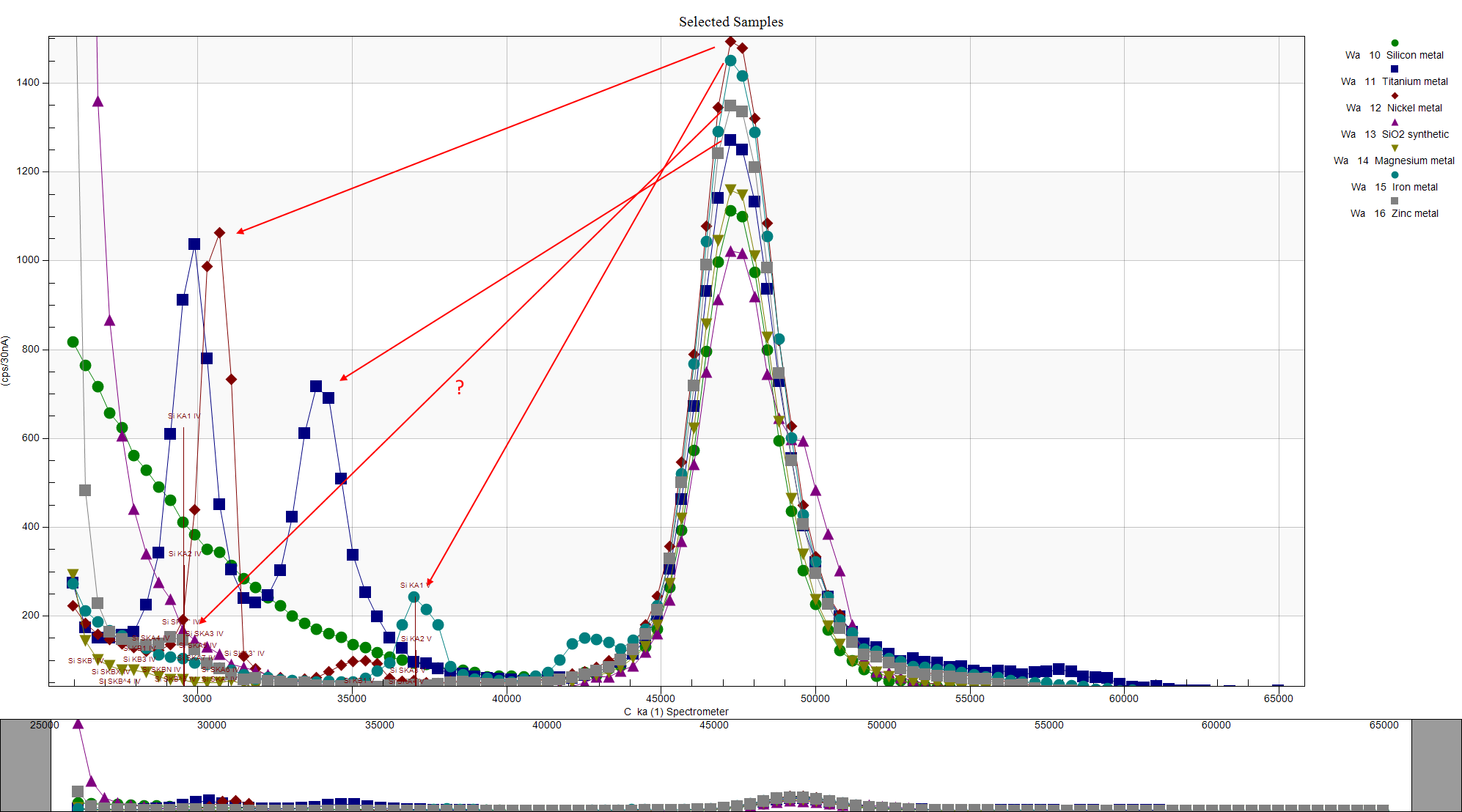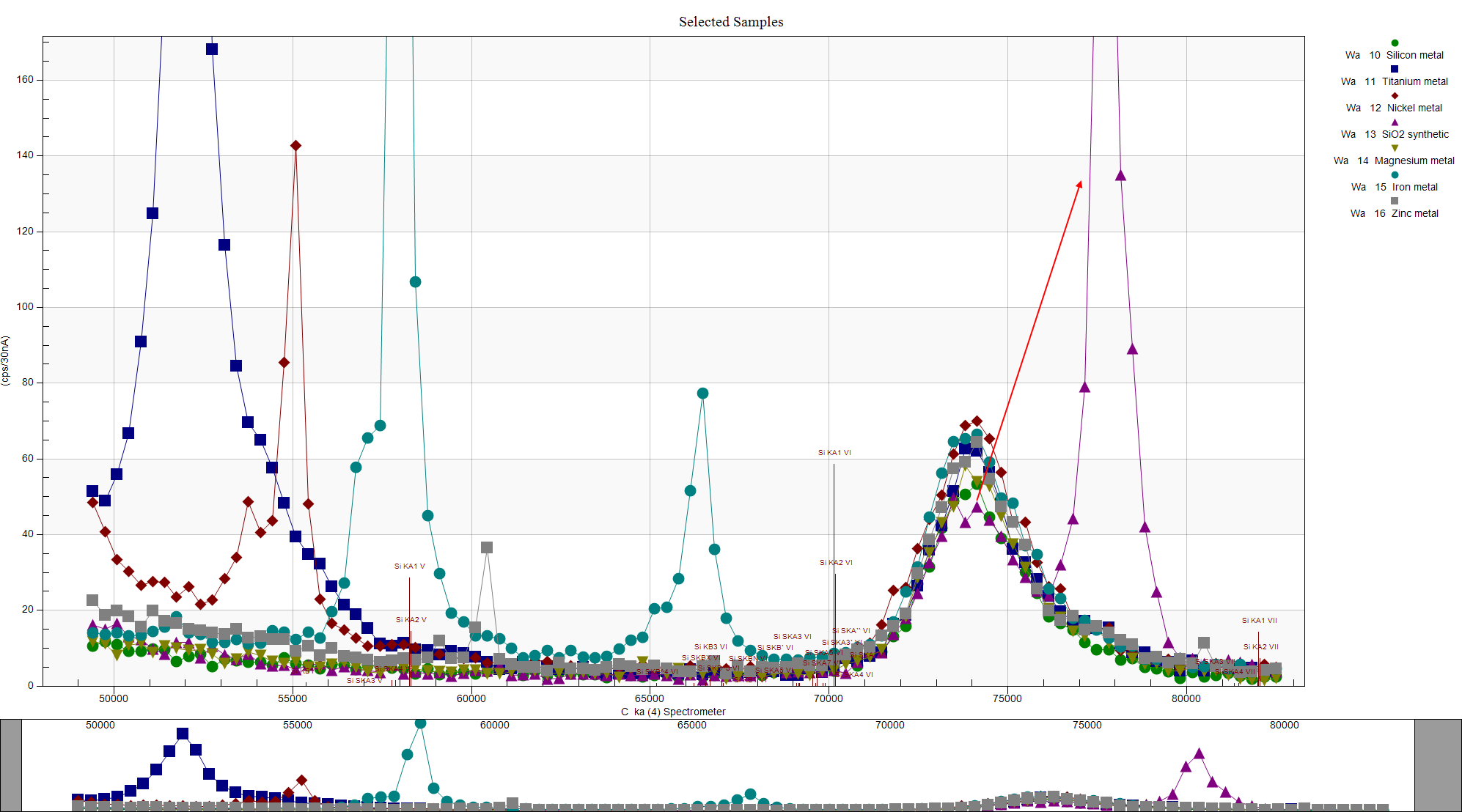Hi all,
On odd observation. I was performing some carbon analyses on some samples that weren't carbon coated and got excellent results with the TDI correction turned on.
Of course my standards (all on the same mount) were carbon coated and when I analyzed them I noticed that the *apparent* carbon concentration varied tremendously and it made me wonder if some emission lines of slightly higher energy than the carbon edge could be fluorescing the carbon coating depending on the matrix metal. Here is a wavescan I did on a number of the metal samples (and SiO2) using my Ni/C PC2 Bragg crystal (the PC1 gave very similar results- though with much less intensity):

The silicon scan shows the well known exponential background (I think John Fournelle has presented some work on this issue?), but the other metals give a carbon peak that seems to vary with the number of higher energy (lower wavelength) emission lines.
I should model these situations with Monte Carlo, but I thought I would first ask if anyone has looked into this previously or has any thoughts on it... here is the PC1 (W/Si) Bragg crystal scan:
